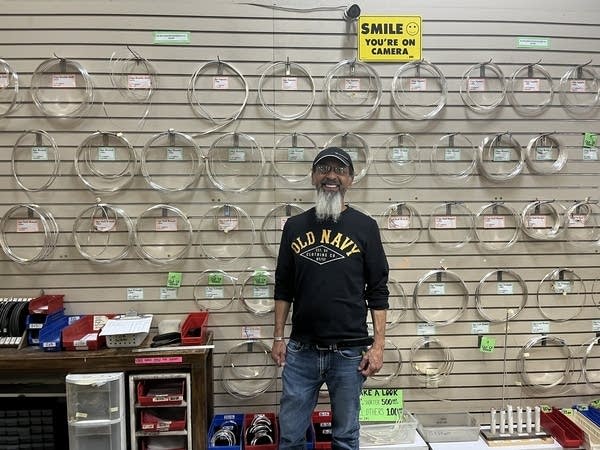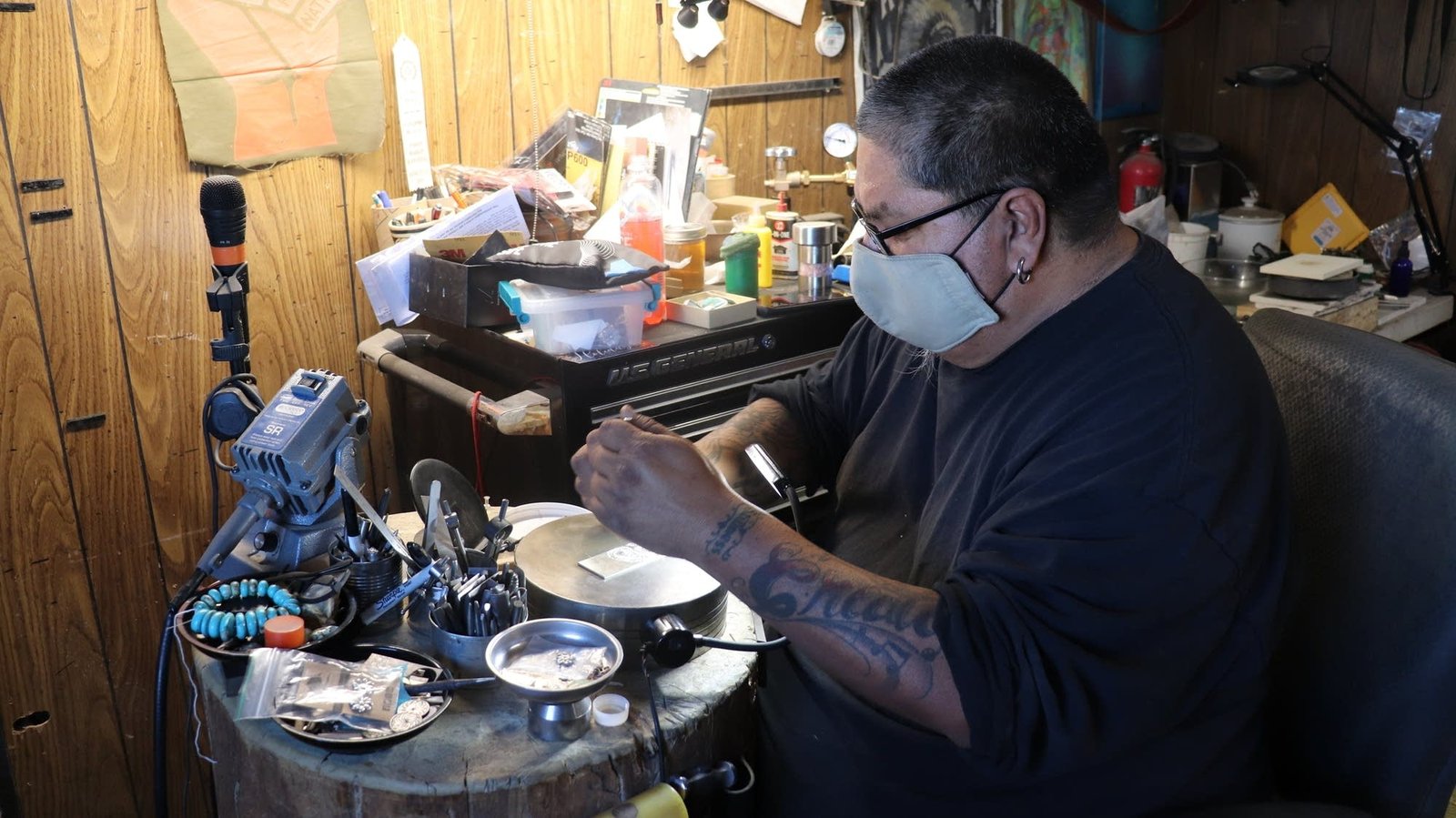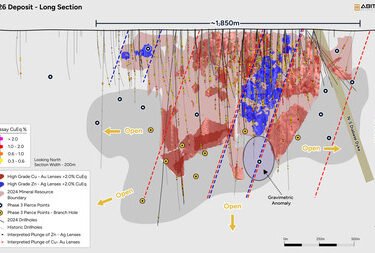At Thunderbird Supply Company’s midtown Albuquerque warehouse, you’ll find hanks of glass beads, turquoise and malachite stones by the pound. Behind a sales counter sits the company’s bread and butter: Sheets, loops and wire spools of silver, ready for artists to craft into bracelets, belt buckles, and squash blossom necklaces.
“They come in and they buy this kind of stuff and then when they show you what’s made out of it you’re just like, ‘Wow, how do you even do that?’” said Mike Chavez, the store’s manager. “It’s like magic.”
Chavez said most of Thunderbird’s customers are Indigenous: Navajo, Pueblo and Apache artists who sometimes drive hundreds of miles to buy silver here.
“We’re a specialty store. There’s not too many places where you can buy silver like this,” he said. “They come from Laguna, from Santo Domingo, from Santa Fe, some from Taos.”
But sales were pretty slow on this Tuesday afternoon, when the base price of silver was surging on news that President Trump was weighing direct involvement in the conflict between Israel and Iran. The white board by the cash register showed prices were up 78 cents to a 13-year high of over $37 an ounce.

Mike Chavez owns Thunderbird Supply Company, a specialty store that sells jewelry materials to Indigenous artists, including silver.
Savannah Peters/Marketplace
“A lot of people probably stayed home today and said ‘OK, I’ll wait till tomorrow and see what happens,’” Chavez said. “And if [the price] stays up they’re like ‘Oh, crap. I’m gonna have to go buy it anyway because I have to finish this order.’”
For Thunderbird’s customers, silversmithing is a traditional artform and a livelihood — one that can feel hyperlocal to the American southwest, but is tied to the global market. Chavez has been working here and watching the silver market since the mid-80s. He’s seen artists weather silver price swings before.
“I think all this political angst that’s in the air is not helping things. And I think this time we’re gonna find out where the threshold is,” Chavez said.
In a bull market for precious metals, like we’ve been seeing since President Trump took office, gold prices tend to heat up first. But Stefan Gleason, CEO of Money Metals Exchange, said silver is “playing catch-up” as investors seek a more affordable safe haven.
“Silver acts like a beach ball that’s held underwater. It has a tendency to underperform, and then it accelerates,” Gleason said. “There’s a lot of momentum behind the market right now. We could see an epic breakout in silver prices.”
Gleason wouldn’t be surprised to see silver crack its longtime ceiling of $50 an ounce by the end of the year.
George Francis, a master Navajo silversmith, remembers the last time prices surged like this around 2011.
“When that happened, a lot of people quit silversmithing because it was just too high. They couldn’t sell the products,” he said.
Francis mentors up-and-coming artists on the craft and business of silversmithing out of his studio in Waterflow, New Mexico.
“I tell them that silver is mandated by what is happening in the world that causes the prices to go up and down. And it’s tough. It’s tough,” he said. “I always just tell other silversmiths, just charge more.”
But Francis said lots of Native jewelry on the market is already undervalued. And when silver prices are rising on economic uncertainty, customers are often tightening their belts for the same reason.
“I’m seeing a lot more customers declining my quotes in the last six months,” said JJ Otero, a Navajo and Hopi silversmith known for his high end rings and bolo ties. “In fact I just had a gentleman that really wanted a certain ring, and I told him the price, and he said it was not within his budget.”
Otero recently raised the price of his jewelry by about 10% across the board to account for his rising material costs. He said he can do that because he’s been smithing for over a decade and has curated a loyal following on social media, where he markets his work to wealthy clients all over the country.

A silver cuff bracelet made by JJ Otero.
Courtesy Otero
“The folks that have the means, they’re not bothered by the increase in price,” Otero said.
Business is moving a bit slower, but Otero said he’s still able to find a home for his pricier work. But not all Indigenous artists have the social media prowess or even internet access that would allow them to follow Otero’s business model. He said those who sell roadside or via middle-men like trading posts and galleries have less pricing flexibility.
“I’m always reminded of what my dad told me that first year when I started making jewelry,” Otero said. “He would say it in Navajo, that my tools and the things I make with my tools are gonna take care of you.”
Today, Otero’s jewelry business takes care of him and his family. It allowed him to leave his career in IT and move from Albuquerque home to Torreon, on the eastern edge of the Navajo Nation, and support his parents as they grow older. But for Indigenous artists just now getting their start, he worries that parth to a rural livelihood could be slipping out of reach.




